Diary Study
Enhancing the meal preparation experience

Team
Oluwatoni Daramola
Dana Forough Dabagh
Lillian Leung
Alexa MacLean
Lili Wang
Summary
Our team conducted a study of the meal preparation experience from the grocery store to the table using non-participant observation, participant observation, and diary studies.
Participant and Non-Participant Observation
Each of our team members conducted a participant and non-participant observation in grocery stores and food courts to learn about their shopping experiences.
We observed 10 participants in total (5 participants, 5 non-participants). By distilling our observations into keywords and whiteboarding them through an affinity diagram, we synthesized our results into the following:
Participant Observation Results
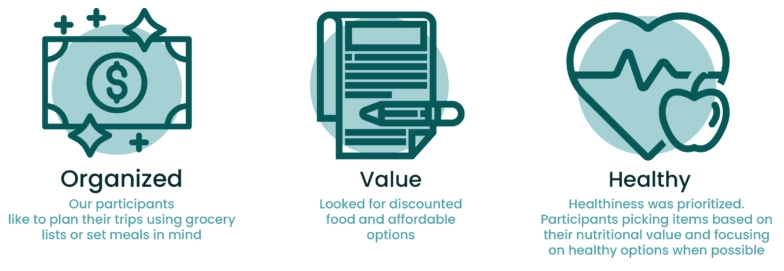
Non-Participant Observation Results
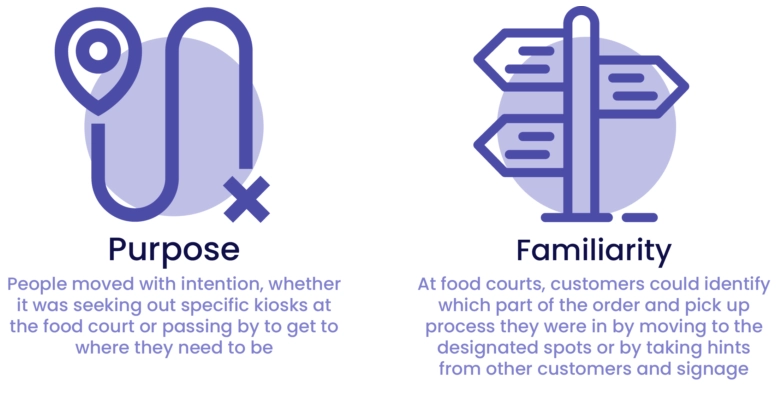
Emergent Themes
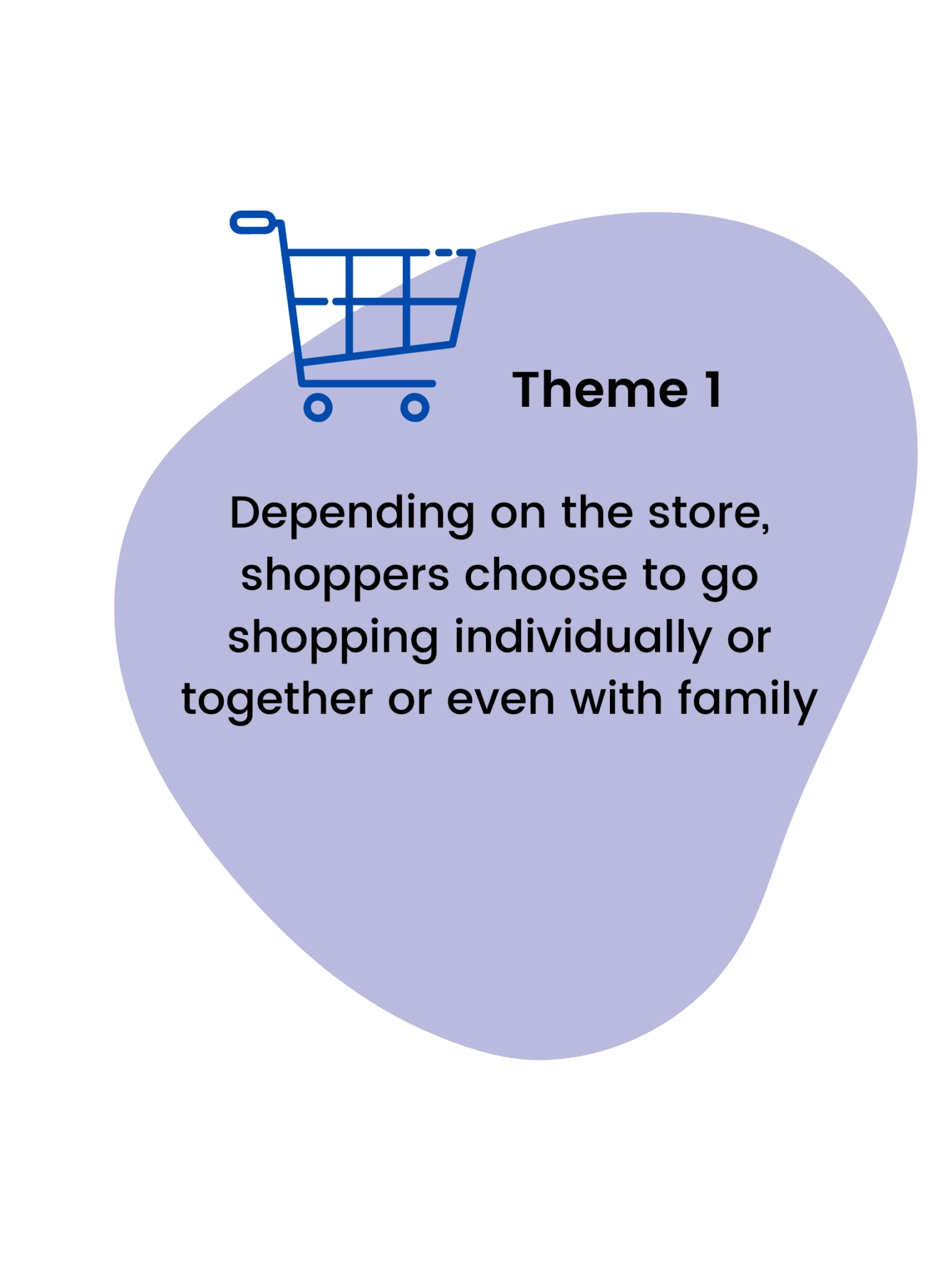
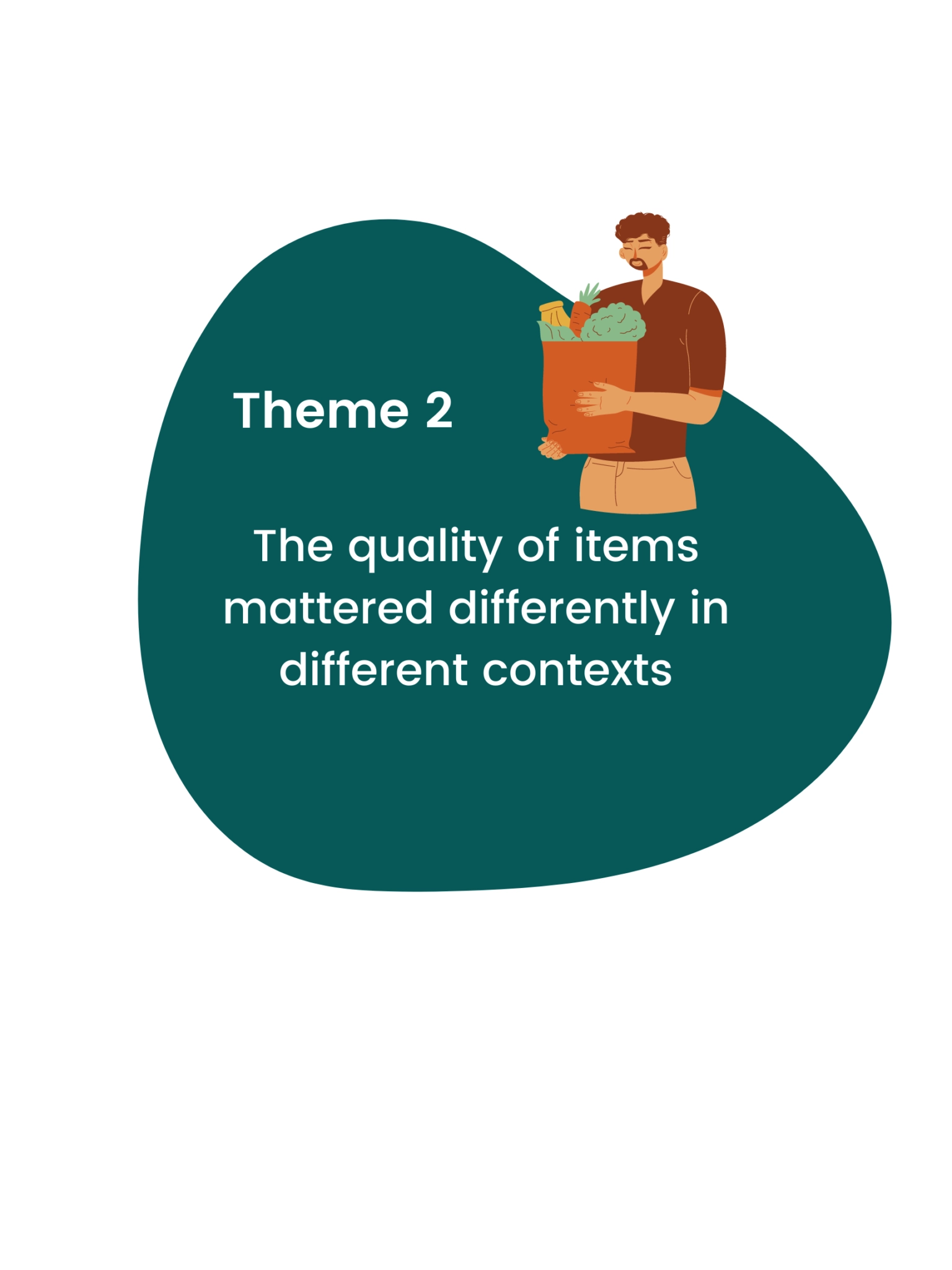
With these themes, we shaped out the research topics and questions for the diary study.
Research Topics
Topic 1
Users have a methodical process. They follow store layouts and shop accordingly.
Topic 2
The knowledge barrier prevents some customers from purchasing products that might require some preparation.
Topic 3
The nutritional facts mattered to the participant. They checked the label of each package.
Diary Study
In the final phase of our project, we rounded out our research with a 3-day diary study.
We recruited 5 new participants who helped us further identify and uncover new opportunities in the meal preparation space.
Participant Criteria
- Grocery shopped in the last month
- Had not participated in a research study in the last 6 months
- Do not work in the grocery retail industry
- Between the ages of 20 and 65
Format
Each entry had 2 multiple choice questions and 1 open-ended question.

Results
Question 1: Did you plan your meal ahead of time or was it spontaneous?
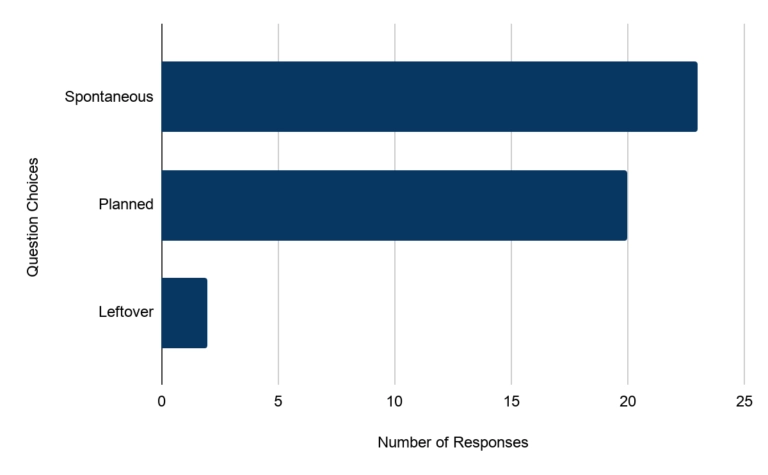
Question 2: What was your food inspiration today? Did you choose the meal based on…
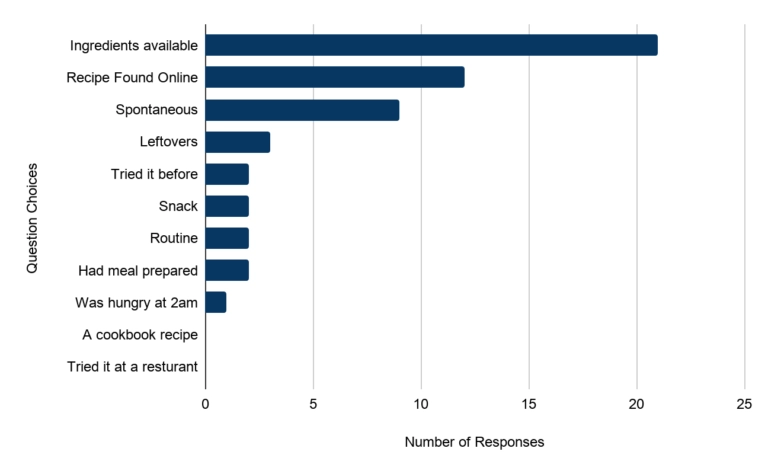
Question 3: Why did this feel like the right thing to make today?
For this open-ended question, we collected answers and sorted them into a table. We then used affinity diagramming to review our data because it allowed us to remove any data that wasn’t useful.
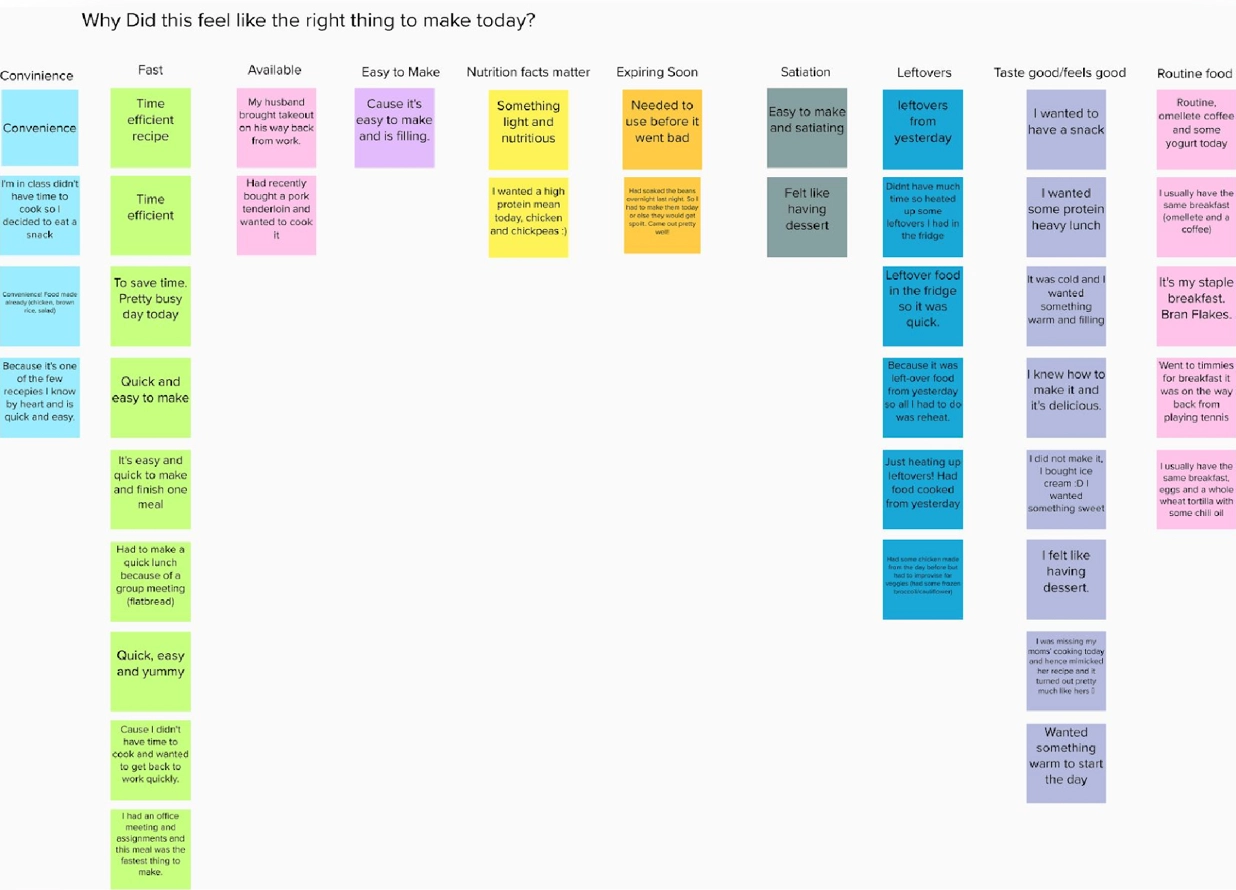
Graphing these by count let us see what the emergent trends were,
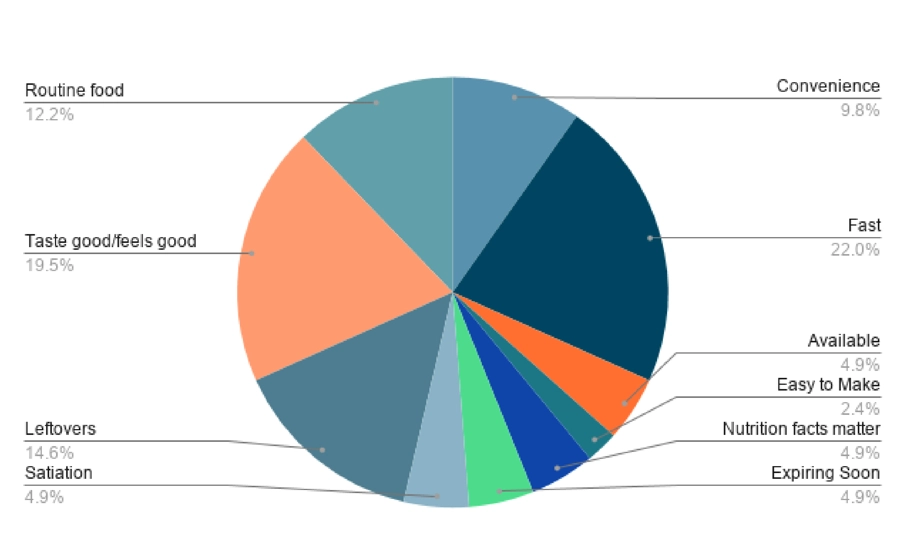
However, our team felt that many of these answers were similar, leading us to merge some of these categories together,
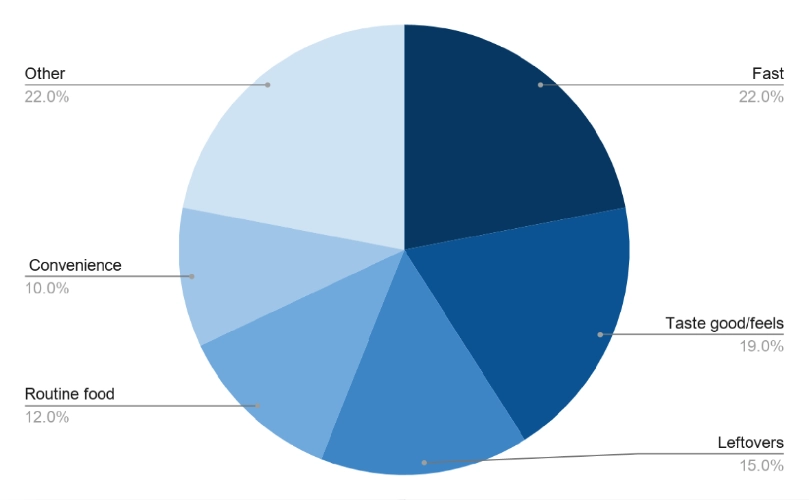
Common Themes
Planned and Spontaneous
People plan out their meals almost as much as they spontaneously whip up a dish.
Quick and Delicious
Participants often specified that these two characteristics were a priority.
Cravings
Foods were chosen because of their good taste or feelings they invoked.
Reliable Recipes
Several meals were prepared because participants knew they were safe and reliable recipes.
Successes
We met our goal of generating 43 diary entry responses, which allowed us to work on effective analysis.
Barriers
Consistent daily monitoring of participant entries.
Participant bias: We acknowledge that there is bias because we ran the test with students in an intensive postgraduate program. Because all participants experience similar time constraints, food preparation might take a lower priority.
Final Insights

- Participants chose meals based on fast and easy preparation.
- Participants often made food based on taste or how eating it made them feel.
- Participants prepared food using leftovers from previous meals.
Recommendations
1) Participants want meals that are fast, tasty, and convenient
From our data points, we think these are the types of packed food that our participants would prefer to buy. Ideally, a packed food would mention the approximate number of portions it contains on the label (for example, 1 and a half meals or 2 meals per person). The purpose is to let the customer know they can save the food for their next meal.
2) Participants enjoy food that brings up good memories and comfort
We recommend that if, for example, a packed food was described as a “warm delight” this could evoke the feelings our participants talked about. Also, packed food with a creative, playful product name could give the customer this good feeling, making it an appealing option for the customer to buy.
Looking Back
What did we learn?
We learned the importance of using both quantitative and qualitative data and the value of each type in answering our questions.
For example, our recommendation came directly from the participants’ answers that their meals were motivated more by cravings than hunger.
What would we do differently next time?
We found nearly 15% of meals were based on leftovers. This made us curious about how much participants enjoyed their leftover food. Why did they have food leftover from their last meal?
We would like to explore this theme further since it may provide us with new insights.